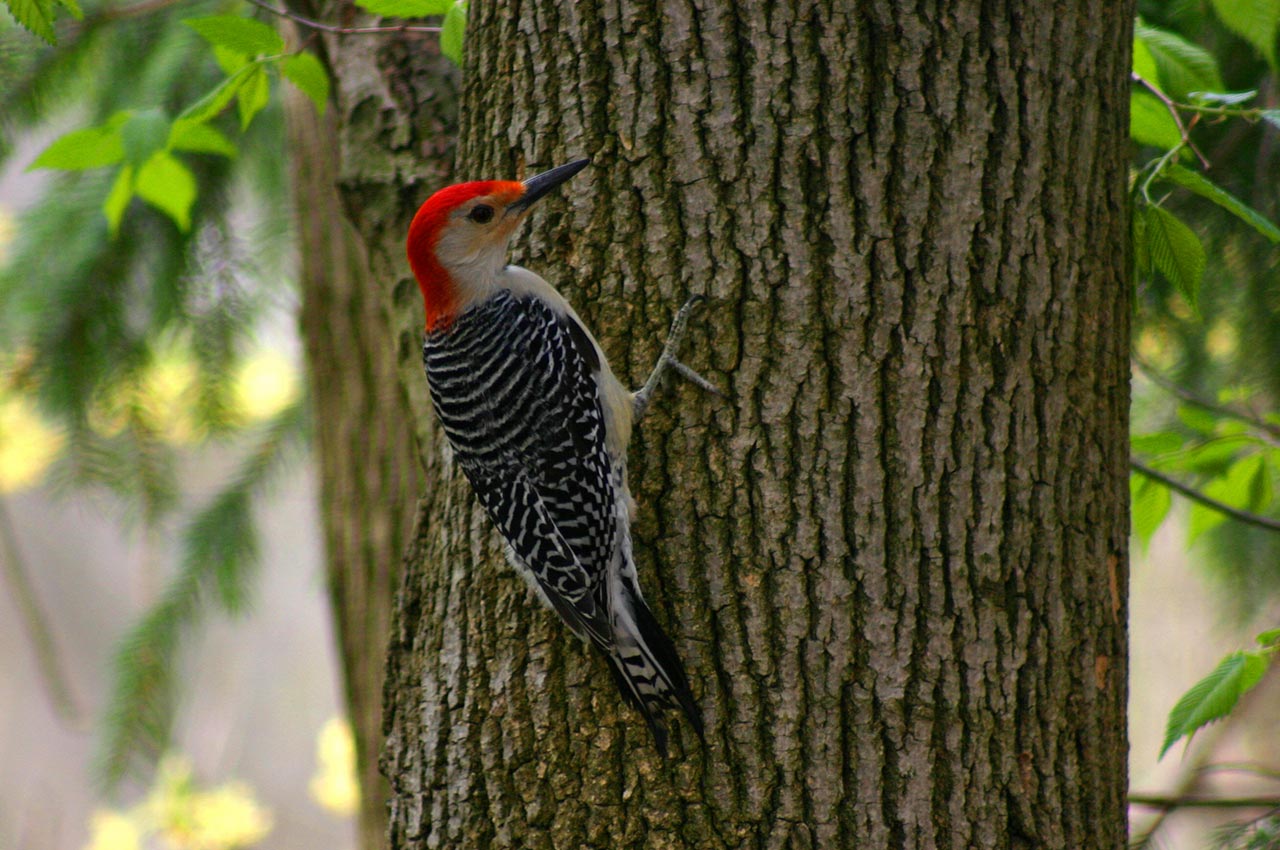Woodpeckers Unleashed: Discovering the Wonders of These Knowledgeable Tree Climbers
Woodpeckers, with their unique markings and balanced drumming resembling with wooded areas, hold an unique area in the avian globe - Woodpeckers in Florida. As we dig into the elaborate information of woodpeckers' nesting behaviors, feeding methods, and the ongoing conservation efforts to protect these exceptional birds, a much deeper admiration for their area in nature unravels.
Anatomy and Adaptations
When analyzing the makeup and adaptations of woodpeckers, one can observe remarkable attributes that make it possible for these birds to prosper in their specialized environmental particular niche. In addition, woodpeckers have zygodactyl feet, with 2 toes facing ahead and 2 dealing with backwards, giving a firm grip on tree trunks while they look for food or drum for interaction.
Moreover, woodpeckers have an unique tongue framework that is long, barbed, and sticky, enabling them to draw out insects from holes in wood. This specialized adaptation permits woodpeckers to exploit a food source that is inaccessible to several other bird types. On the whole, the anatomy and adaptations of woodpeckers showcase the amazing evolutionary solutions that have allowed these birds to thrive in their arboreal environment.
Drumming Habits
Having actually explored the makeup and adaptations of woodpeckers, the emphasis now moves to understanding their drumming actions, an unique facet of their interaction and territorial screens. Drumming is an important kind of communication amongst woodpeckers, offering numerous functions such as developing territories, drawing in companions, and signaling alarm. Each woodpecker species has an one-of-a-kind drumming pattern that helps individuals identify participants of their very own varieties and differentiate them from competitors or predators.
Woodpeckers create drumming noises by rapidly pecking on powerful surface areas such as dead trees, energy poles, and even steel objects, producing a collection of rhythmic beats. The strength and rate of drumming can differ based upon the objective; as an example, a fast drumming sequence might symbolize aggression towards intruders, while a slower and softer drumming pattern can show courtship (Woodpeckers in Florida). In addition, woodpeckers may readjust the regularity and period of their drumming to communicate details messages efficiently
Nesting Practices
Discovering the nesting behaviors of woodpeckers discloses remarkable insights into their reproductive behaviors and habitat choices. Woodpeckers are understood for their one-of-a-kind nesting choices, often digging deep into tooth cavities in trees to produce sheltered areas for increasing their young. These dental caries offer not only as a nesting website yet additionally as a safe and secure sanctuary from killers and inclement weather.
Woodpeckers show a high level of fidelity to their nesting sites, often going back to the exact same place every year. This behavior highlights the relevance of suitable environment availability for their reproductive success. The choice of a nesting site is vital for woodpeckers, with factors such as tree species, elevation, and decay stage playing considerable functions in their decision-making procedure.
Surprisingly, some woodpecker types are known to excavate numerous cavities within their area, giving themselves with different nesting choices. This approach might work as a kind of insurance versus possible risks or disturbances to their main nesting website.

Feeding Techniques
One of the most distinct feeding behaviors of woodpeckers is drumming, which includes rapid pecking on trees to reveal insects underneath the bark. Woodpeckers are likewise known to dig deep into cavities in trees to accessibility hidden insect larvae or sap. Some types, like the acorn woodpecker, store nuts in specifically developed holes called granaries.
Conservation Efforts
In the middle of the detailed feeding techniques exhibited by woodpeckers, the conservation initiatives intended at protecting these fascinating birds play a vital role in maintaining their habitats and populaces. Woodpeckers deal with various risks to their survival, including environment loss due to logging, climate modification modifying their about his environments, and crashes with synthetic frameworks such as buildings and automobiles - Woodpeckers in Florida. Preservationists are actively working to address these obstacles and make certain the long-lasting wellness of woodpecker species

Education and learning and public understanding campaigns are additionally vital parts of woodpecker conservation initiatives. By increasing understanding about the value of these birds in keeping healthy and balanced woodland ecological communities, conservationists can amass support for habitat preservation initiatives and advertise accountable land monitoring methods. Through collective efforts between scientists, policymakers, and local communities, we can collaborate to secure a future where woodpeckers flourish in their all-natural habitats.
Conclusion
